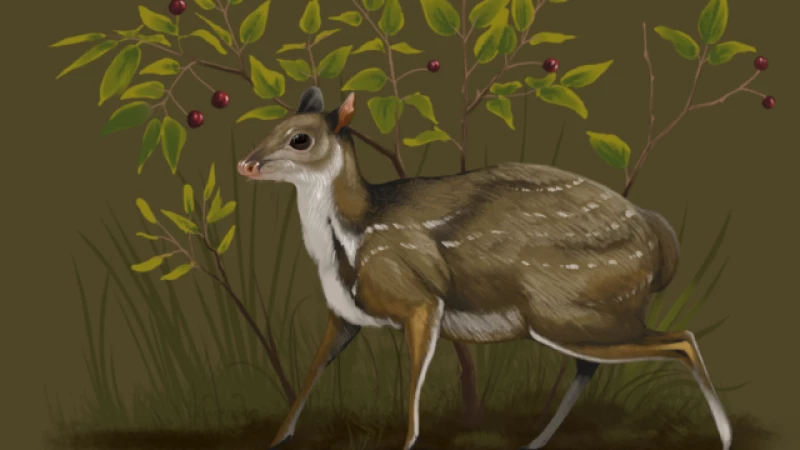Exciting news emerged as scientists unveiled a new genus of ancient deer believed to have roamed around what is now southwestern South Dakota approximately 32 million years ago. These prehistoric deer, unlike their modern counterparts, were hornless and about the size of today's household cats. The groundbreaking discovery stemmed from the analysis of a fossilized skull found at Badlands National Park.
The research, detailed in a recent study published in the Proceedings of the South Dakota Academy of Science, was a collaborative effort involving experts from Badlands National Park, the American Museum of National History, and California State Polytechnic University.
Leading the investigation were Mattison Shreero and Ed Welsh, both rangers at Badlands National Park. In honor of paleontologist Vincent Santucci, who played a key role in developing the park's paleontology program, the newly-discovered deer was named santuccimeryx, or "Santucci's ruminant," as announced by the National Park Service.
In a press release, Santucci expressed his gratitude for being connected to this significant fossil discovery, especially since it originated from the place where he commenced his career as a National Park Service paleontologist nearly forty years ago.
Santuccimeryx, classified under the extinct Leptomerycidae family, inhabited regions of North America from approximately 41 million years ago to about 11 million years ago. This family is closely related to mouse deer, which reside in tropical forests in western Africa and southeastern Asia. However, distinct features of this creature set it apart — notably, its skull displayed characteristics from different prehistoric animals that existed almost 10 million years apart.
Upon examining dental features with similarly unique combinations, researchers classified the fossils as belonging to "a distinct species" within the previously unidentified santuccimeryx genus.
The term "genus" denotes a group that contains multiple species. For instance, within the genus canis, one can find dogs, foxes, wolves, and other dog-like creatures, whereas humans are categorized under the genus Homo sapiens.
Back in 2016, a peculiar fossil of a hornless deer was unearthed in Badlands. The landscape of Badlands today is vastly different from what it was when this deer roamed the earth. Geologists explain that the rock formations that eventually shaped Badlands began forming long before the existence of the santuccimeryx. However, the erosion processes that sculpted the park into its current state only started around 500,000 years ago. Learn more here.







